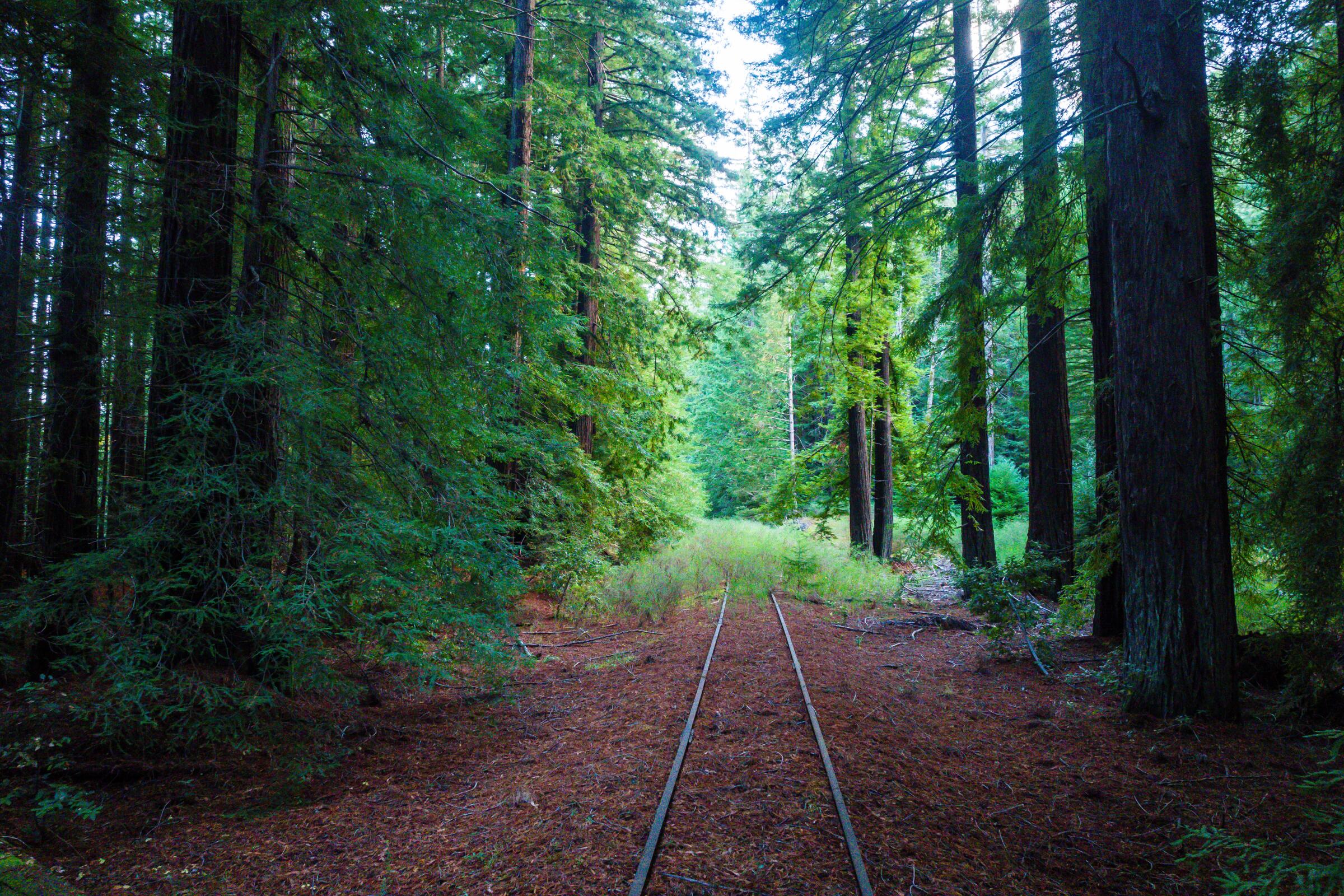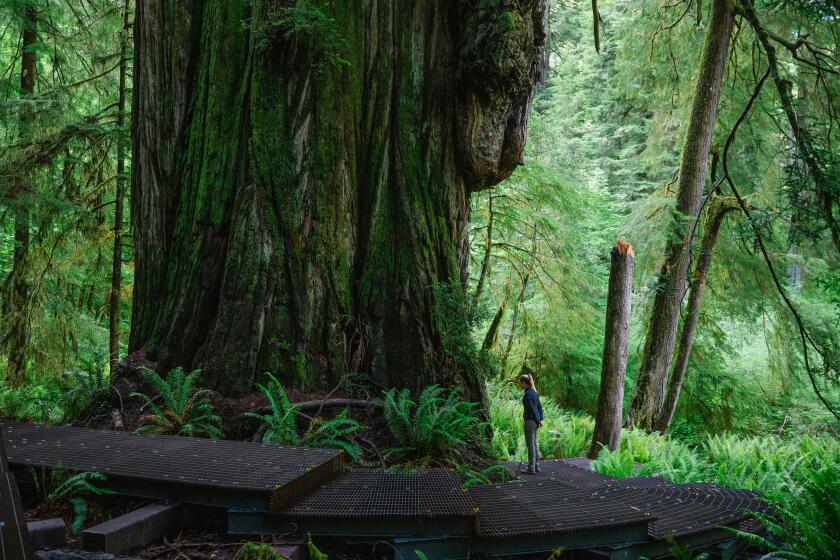Lila Seidman is a reporter focused on California wildlife and the outdoors for the Los Angeles Times. Since joining The Times in 2020, she has investigated mental health policy and jumped on breaking news. A native Angeleno, Seidman holds a bachelor’s degree from Reed College and a master’s degree from Pepperdine University.
- Share via
1
More than a century ago, a railroad was constructed to shuttle passengers and redwood logs between San Francisco and Humboldt Bay.
Now the since-abandoned train track could be transformed into a 307-mile pathway through remote, wild country along California’s North Coast, a move advocates hope will create a world-class outdoors destination and jump-start the economy.
The Great Redwood Trail moved closer to realization this week with the release of a document mapping out the planning, construction and management of the trail in Mendocino, Trinity and Humboldt counties, or the northern portion of the envisioned path. Segments in Sonoma and Marin counties will be planned separately.
“I would put it in the category of the Pacific Crest Trail, the Appalachian Trail — these large, landscape-scale trails that provide an experience for people to see areas that they just would never have access to otherwise,” said Caryl Hart, chair of the California Coastal Commission and board member of the Great Redwood Trail Agency, which is tasked with developing the path.
If realized, the project would be the longest so-called rail trail in the country, generally following the defunct track through towering redwoods and along rushing rivers teeming with salmon. The relatively flat trail would accommodate hikers, bikers and horseback riders while potentially providing an economic infusion to small towns struggling amid the decline of logging and rise of legal cannabis.
Officials say it’s probably 20 years away from completion but will move forward section by section. Tribes are being consulted to guide the project, officials said, but some have claimed they’re being sidelined.
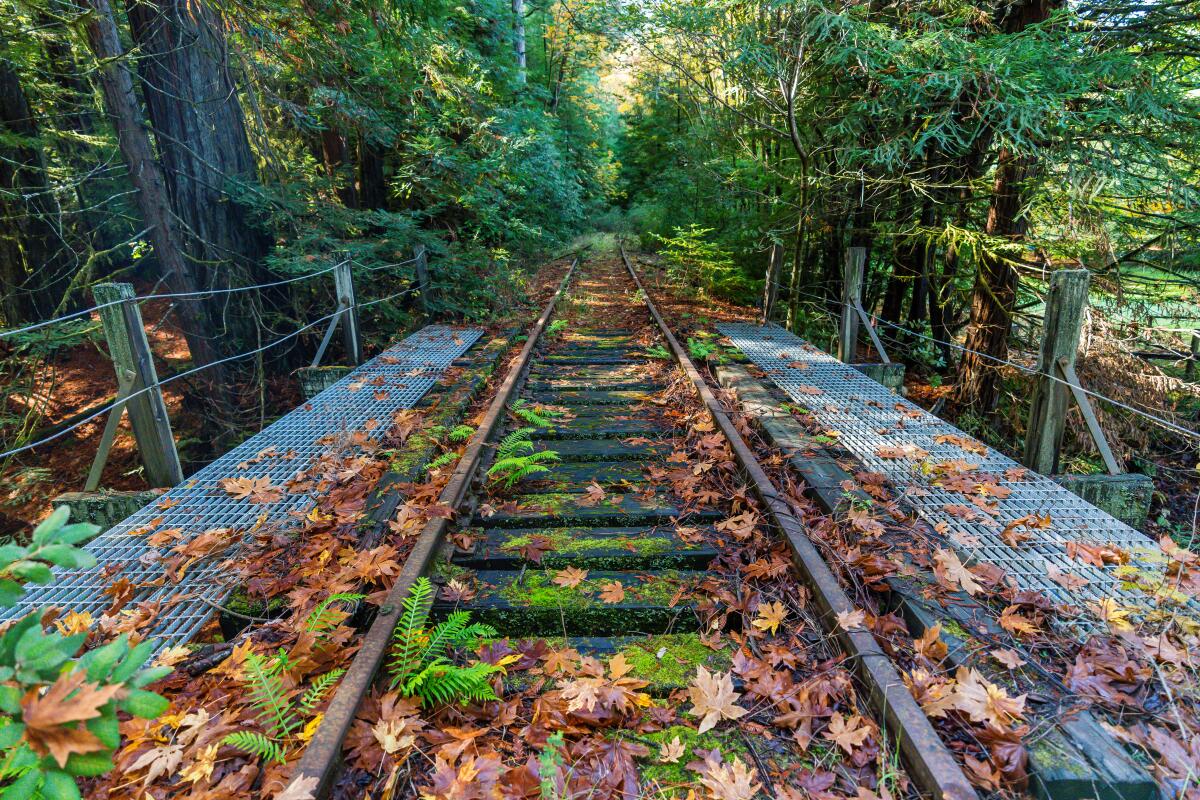
If fully realized, the Great Redwood Trail would stretch more than 300 miles.
(Great Redwood Trail Agency)
Hart said there’s currently no means of taking a continuous walk through vast stretches of coast redwoods — the tallest trees on Earth.
“And that’s what this is going to provide, where you can be in the forest for long periods of time,” she said, “and it really is a magical, spiritual experience.”
Seeds of the vision date to the 1980s, when the Northwestern Pacific Railroad was struggling to stay afloat. Local advocates started thinking about turning the troubled line into a trail, said Steve Madrone, board vice chair for the Great Redwood Trail Agency, then a Blue Lake City Council member who was among those pushing for the concept.
The state tried to prop up the railway, but in 1998 federal officials ordered it closed due to safety concerns. As hopes to restore it fizzled, enthusiasm for developing the trail climbed. In 2018, a law passed recognizing that the corridor could become a long-distance trail. About three years later, the Great Redwood Trail Agency was created to shepherd the transition of the 231-mile northern stretch.
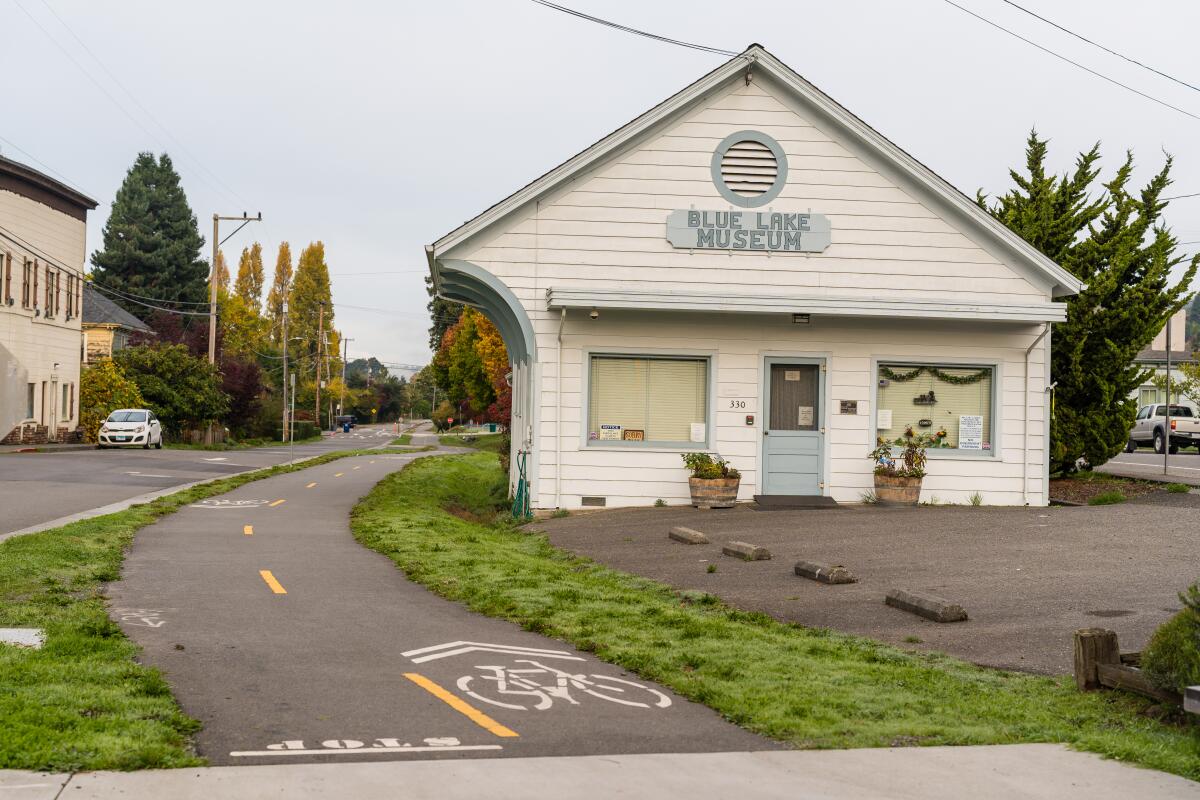
Blue Lake is one of the areas where the trail is currently open to the public.
(Great Redwood Trail Agency)
Most of the trail is still just a dream, but there are some strollable segments in Ukiah, Eureka, Arcata and Blue Lake. The more than 500-page master plan identifies 40 segments across the North Coast and ranks them by feasibility, impact and readiness. Sonoma-Marin Area Rail Transit, or SMART, is overseeing the southern portion of the project, where the path will mostly follow a commuter rail line.
Generating particular excitement among planners is the prospect of opening up Eel River Canyon, abutting the nearly 200-mile Eel River, which runs along the northwestern coast not far from the Pacific Ocean. While it snakes through some major population centers, it’s relatively unknown due to inaccessibility and lack of infrastructure, said Marin County Supervisor Mary Sackett, board chair for the Great Redwood Trail Agency.
It’s likely to carry the highest cost of all the segments because it is remote and requires the removal of railroad debris that has washed into the river.
Besides providing access to a natural gem, “I think that this is the only chance we have to clean up that past history,” Sackett said.

California’s North Coast is known for its remote beauty.
(Great Redwood Trail Agency)
Advocates say it could also be an economic lifeline for remote hamlets. Planning documents estimate the trail would bring in more than $102 million annually, with out-of towners eating, recreating and sleeping in areas that are currently off the beaten path.
Sackett said illegal cannabis — concentrated in Humboldt, Mendocino and Trinity counties — once brought in an influx of migrants and money, even as the industry devastated the environment. Hopes of large tax payouts from legal grows largely fizzled, she said.
“It really brings an opportunity for great economic vitality in some of these small areas that have been really negatively impacted by the cannabis industry,” Sackett said.
Some local agencies and community members worry the trail could increase wildfire risk and create safety hazards for trekkers, as well as invite homeless encampments and trespassing. The master plan offers potential strategies to address those issues, including coordinating with law enforcement, social services and other public agencies.
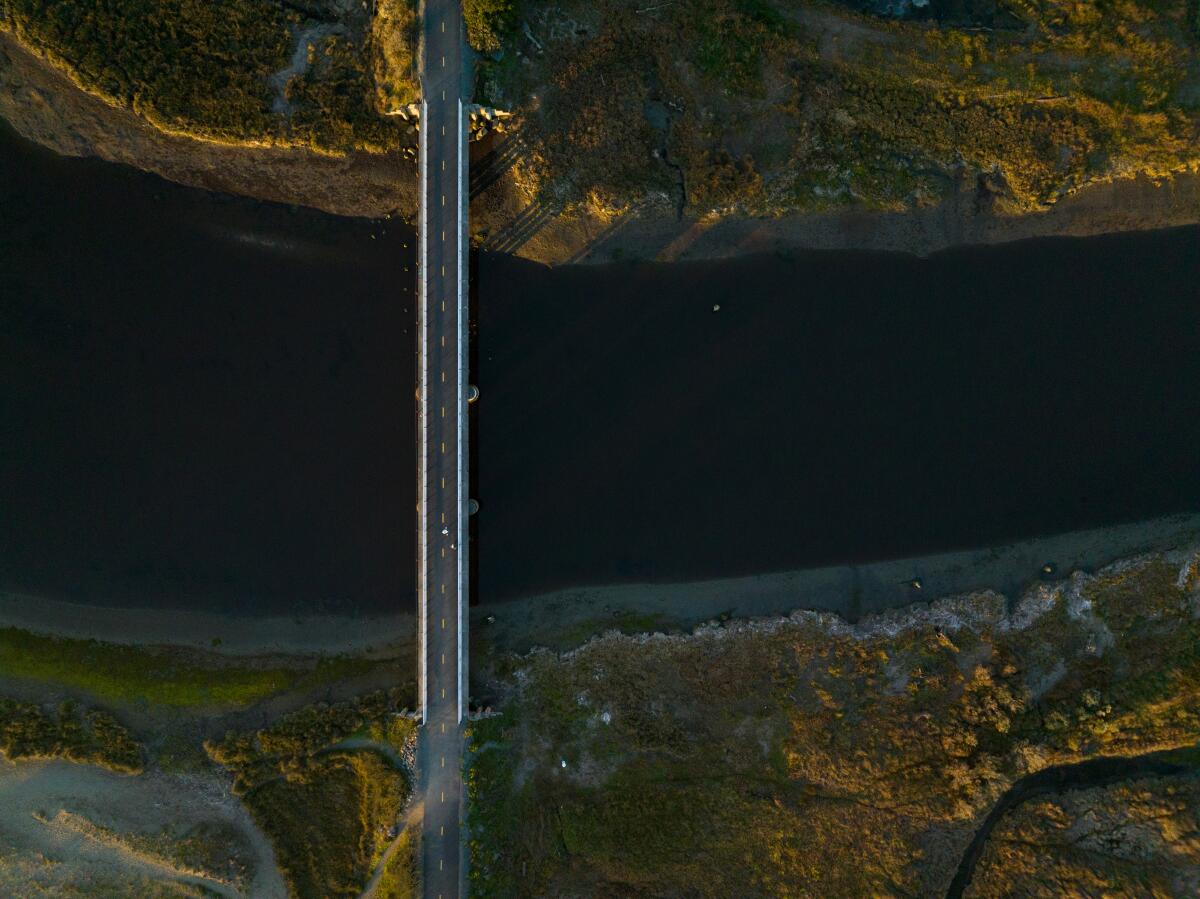
At least one Native American group has asked for a larger say in how the Great Redwood Trail gets built.
(Great Redwood Trail Agency)
Madrone, a supervisor for Humboldt County, said tribes of Eel River Canyon have expressed significant anxiety about how the trail could affect their cultural resources and sacred sites. In January, the Ukiah Daily Journal reported that a group of Wailaki descendants and their allies, calling themselves the Kinest’e Community Coalition, demanded to be a given a more prominent seat at the table.
There are discussions about possible tribal co-management of areas of the trail, Madrone said, adding that there are promising examples of successful partnerships in other areas the line runs through, such as Humboldt County.
“There’s a lot of concern on the part of tribes, and rightfully so, about what it all means,” Madrone said. “So we have our work ahead of us to really deliver on building really strong partnerships.”
The period for public comments on the master plan runs through June 3. Next steps include kicking off a process to secure an environmental permit for the whole master plan. Individual projects may need additional environmental review, but Madrone said having the broader permit should speed things up and lower costs.
Tips for visiting the spellbinding Grove of Titans in Jedediah Smith Redwoods State Park.
